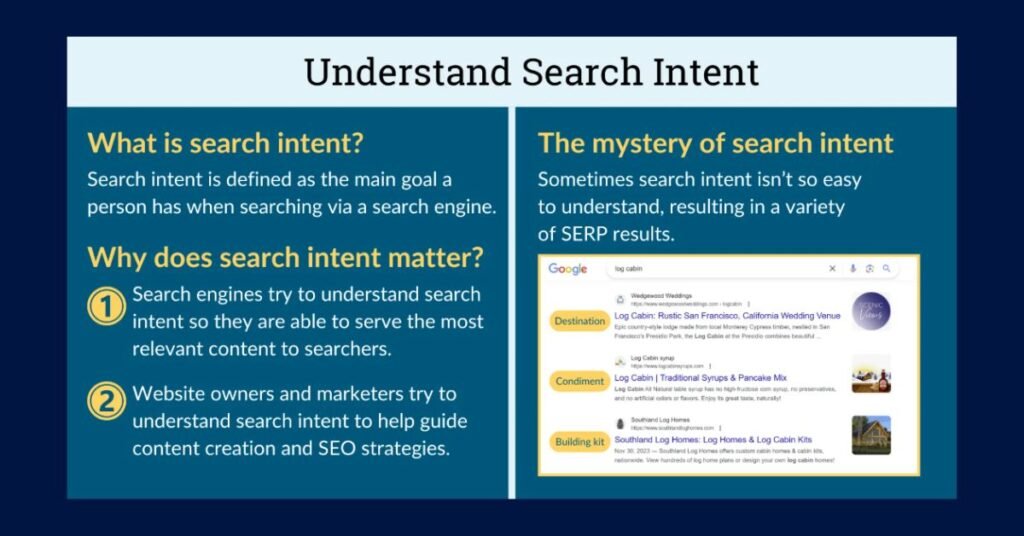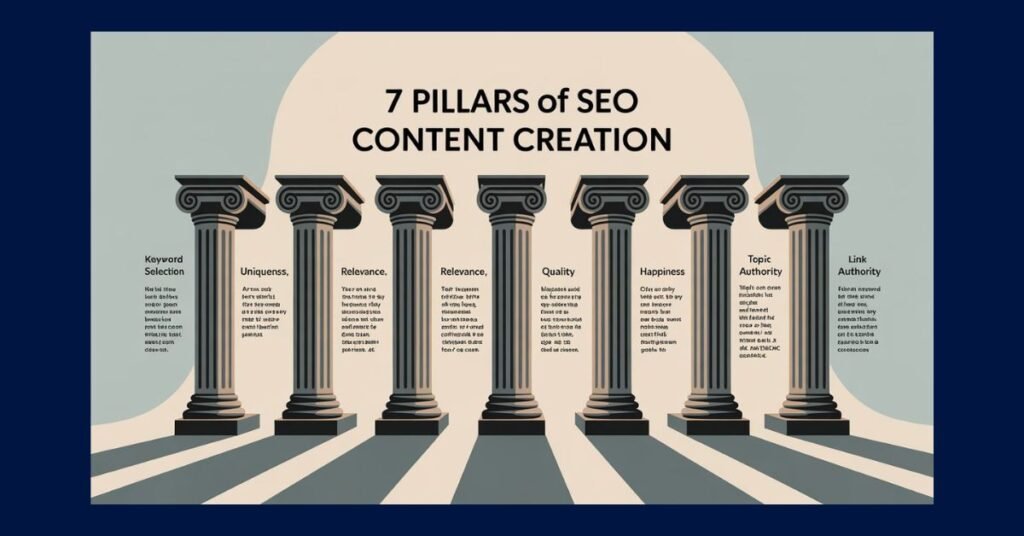Creating SEO content that ranks in 2025 is crucial for driving organic traffic to your site. Whether you’re a beginner or a seasoned content creator, following the right steps can help you achieve high Google rankings.
This guide will walk you through essential strategies to create content that attracts both search engines and readers.
What Is SEO Content and Why It Matters in 2025?
SEO content is simply writing that helps your website show up in search engine results. The goal is to create content that answers questions, solves problems, and is visible to search engines like Google.
In 2025, SEO is all about creating content that meets user intent and stands out from the competition.
Let’s dive into the key strategies for creating content that ranks well.
The Key to Ranking in 2025: Understanding Search Intent
What Is Search Intent?
Search intent is the reason behind a person’s search. Understanding it is essential for creating content that ranks well. Google looks at the searcher’s intent—whether they want to gather information, make a purchase, or find a specific website.
There are three main types of search intent:
- Informational: The searcher wants information (e.g., “How to create SEO content”).
- Transactional: The searcher is ready to make a purchase (e.g., “Buy SEO tools”).
- Navigational: The searcher is looking for a specific website (e.g., “Facebook login”).
Aligning Your Content with Search Intent
To rank well, your content must match the search intent. For example, if someone searches for “How to create SEO content,” they likely want a guide or tutorial.
Therefore, your content should be comprehensive, helpful, and answer their questions.

7 Pillars of SEO Content Creation
Pillar 1: Keyword Selection
Keyword selection is the first and most critical step in SEO content creation. But don’t just focus on search volume. Relevance and intent are the real driving factors.
- Relevance: Choose keywords that closely align with what your audience is searching for. Think about keywords that bring people closer to a conversion.
- Intent: Understand if the keyword is informational (e.g., “How to create SEO content”), commercial (e.g., “Best SEO tools”), or transactional (e.g., “Buy SEO services”).
- Competition: If your competitors have high-quality, authoritative content on the same topic, you’ll need to match or surpass it.
- Value: Use tools like Google CPC data to assess how much advertisers are willing to pay for specific keywords, as a higher CPC often indicates more valuable keywords.
- Demand: You want to target keywords with search demand but also look for unique opportunities with low competition, such as long-tail keywords.
Pillar 2: Uniqueness
Google values unique content that stands out from the competition. The best way to do this is by creating original content that offers something fresh. Whether it’s user-generated content, fresh data, or experience-driven content, your goal should be to stand out in a crowded field.
For instance, you can share personal opinions, create your own studies, or incorporate fresh insights that your competitors haven’t explored. This gives you a unique edge in SEO content creation.
Pillar 3: Relevance
Relevance is crucial. Your content should perfectly match the search intent behind the keyword. NLP (Natural Language Processing) tools can help identify related topics and keywords to ensure your content covers everything relevant to your target audience.
- Use content optimization tools to help you find what competitors are covering.
- Ensure your content answers user questions directly, using a natural and conversational tone.
- Use headings (H1, H2, H3) and subheadings to structure your content so that it’s easy to read and understand.
Pillar 4: Quality
Content quality is one of the strongest ranking factors in 2025. It’s important to create content that is not only well-written but also provides true value to your readers.
Here are some ways to ensure your content is top-quality:
- Write to One Person: Speak directly to your reader, making them feel like the content is designed for them.
- Avoid Jargon: Keep your language simple and easy to understand. Speak how you would naturally speak to a friend.
- Break Patterns: Engage readers by telling stories, asking questions, or using humor to keep their attention.
Pillar 5: Happiness
User satisfaction is a critical element in SEO success. Google tracks user experience (UX) through metrics like bounce rates, time spent on page, and more. Make sure your content:
- Loads quickly
- Is easy to read
- Engages users with multimedia (images, videos, etc.)
- Has a clean and functional layout without intrusive pop-ups or ads
Pillar 6: Topic Authority
Google wants to see that your website has authority on the subject matter. This means that you should consistently create content related to your niche and link internally to your other content.
This builds topic authority, making your website a go-to source for related information.
Pillar 7: Link Authority
Backlinks still matter in 2025. Quality backlinks from reputable sources signal to Google that your content is trustworthy and valuable.
Focus on getting backlinks from high-authority websites in your niche.

Best Practices for Writing SEO Content in 2025
- Use NLP and LSI Keywords: When writing, use NLP tools to help find related terms and entities that Google associates with your topic. This makes your content more semantically rich and relevant.
- Focus on User Experience (UX): Make your website mobile-friendly and easy to navigate. The better the user experience, the better your rankings.
- Add Multimedia: Images, videos, and infographics keep readers engaged and help improve your rankings.
- Optimize Your On-Page SEO: Always include your target keyword in your title, meta description, and URL. Use it naturally in your content, especially in headings and subheadings.
Frequently Asked Questions (FAQs) About SEO Content in 2025
Relevance and search intent are the most critical factors. Your content must answer the user’s question in a clear and concise way.
Focus on relevance and intent rather than search volume. Use tools like Google Keyword Planner to find keywords that match what your audience is searching for.
To make your content stand out, offer fresh data, share your personal experiences, or create user-generated content. This helps differentiate you from your competitors.
Content quality is a major ranking factor. Google rewards content that is well-written, provides value, and satisfies user needs.
Use tools like Google Analytics and Google Search Console to track traffic, user engagement, and keyword rankings. Regularly review these metrics to improve your content.
Conclusion
Creating SEO content that ranks in 2025 is all about understanding your audience, using the right keywords, and providing high-quality, unique content.
By following the 7 pillars of SEO content creation, you can build a strong foundation for your website’s success in the ever-evolving world of SEO.
Start applying these strategies today, and watch your content rise through the rankings.

